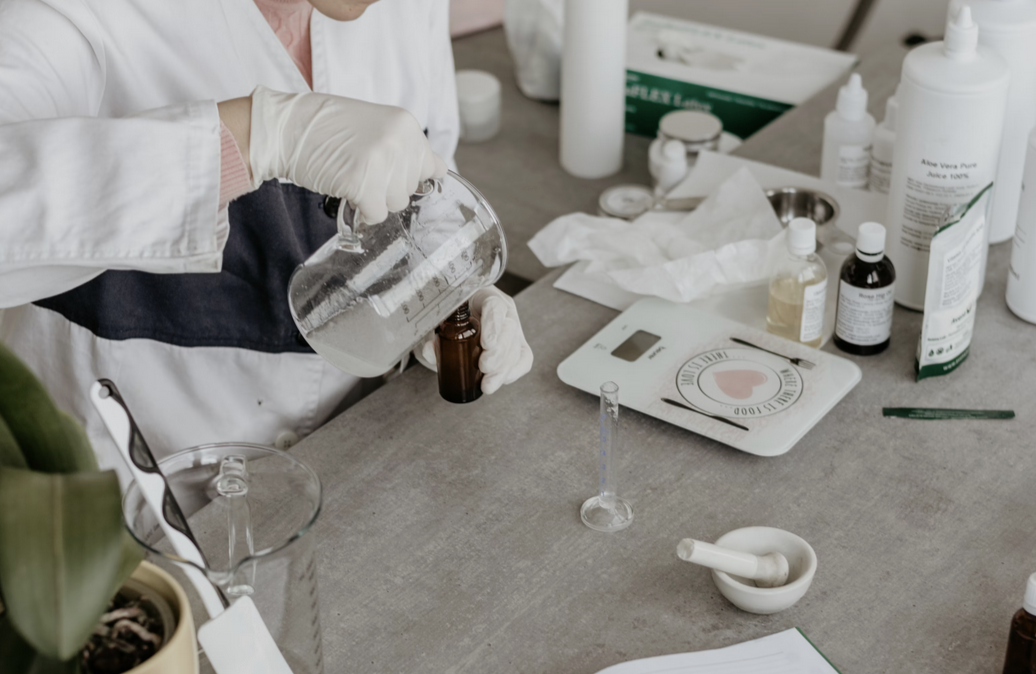As awareness of the climate crisis spreads, consumers are acting with more environmental consciousness. The movement towards conscious consumption can be seen in the movement away from fast fashion, the advent of zero-waste replacements for everyday products like plastic wrap, and growing support for local businesses. The movement is visible in several industries, one of which is the beauty and cosmetic industry.
When the movement started, high-end brands like Goop and Tarte began to offer “clean” beauty products. Now, “clean” makeup can be found almost anywhere, from Sephora to Target. While the growing presence of cosmetics labeled “clean” might seem like a good thing, “clean” is unregulated and undefined, leaving room for mass amounts of green washing—presenting a deceptive image of environmental responsibility.
Although the clean beauty movement is diverse in its values and ingredients, at a basic level, “clean” beauty is characterized by the movement away from specific ingredients. The first ingredient ditched by clean beauty products was parabens, a preservant that can be found in a variety of household objects, from toothpaste to lotion. At a topical level, parabens are skin irritants, but their impact can be far more severe. Parabens are endocrine disruptors, meaning that their presence can alter hormonal systems in the human body, creating issues of infertility in men and women as well as the acceleration of breast cancer. Parabens are also known environmental disruptors. Laboratory tests have confirmed that parabens kill coral, endangering a variety of fish species and leaving coastlines more vulnerable to storms and erosion.
While the transition away from parabens seems to be the most important tenet of clean beauty, another concern for the clean beauty industry is the presence of formaldehyde in cosmetic products. Formaldehyde is a preservant used in products such as glue and plywood. In small amounts, formaldehydes tend not to be very harmful. However, organizations like the International Agency for Research on Cancer have labeled formaldehyde as a human carcinogen. In the environment, formaldehydes can break down and become formic acid, a cause of acid rain. The physical and environmental impacts of ingredients like parabens and formaldehyde signal a need for the cosmetic industry to move towards a more environmentally-responsible future. While the cosmetics industry seems to be moving towards this future on the surface, many products that are labeled as “clean” are not as environmentally responsible as they seem.
Because there is no legal definition of what it means to be “clean,” the task of defining the word is left to beauty brands. In the best case, this translates to high environmental standards that are met with accountability. However, self determination can lead to unclear descriptions and no real change, as companies can essentially slap the word “clean” on their packaging and reap the benefits. While these murky standards are sometimes caught by the public, misleading advertising can sometimes exploit consumer demand for sustainable shopping. In the cosmetics industry, having products perceived as clean is a necessity for a company’s survival. This means environmentally damaging ingredients are showing up in increasingly sneaky ways, the most prominent of which is through the use of fragrance.
While an increasing number of people are becoming aware of ways that petroleum appears in cosmetics through ingredients like butanol and isopropyl alcohol, added fragrances are oftentimes 95% petrochemical-derived as well. Benzene derivatives and phthalates are commonly found in fragrance. The production of these chemicals is environmentally damaging, and can lead to a variety of health risks as well. According to the Environmental Protection Agency, benzene is a known carcinogen shown to increase leukemia in adults. Phthalates have been shown to cause reproductive harm in humans and animals, and to damage water systems. While other petrochemicals like butanol must be labeled on cosmetic products, because of a loophole in the Federal Fair Packaging and Labeling Act, the ingredients listed in the chemical fragrance do not need to be listed. As stated earlier, because the meaning of the word “clean” differs with each company, the consumer is left with the responsibility of researching the ingredients in each product, and their impacts on health and the environment.
The lack of regulation surrounding clean cosmetics is not a new issue; in fact, it has been an industry standard for years. For comparison, the United States only has around 11 banned cosmetic products compared to the European Union’s 1300. Critics claim the lack of regulation has permitted toxic and environmentally damaging ingredients to remain central to the production of cosmetics. There are currently third party organizations like Campaign for Safe Beauty and Environmental Working Group that work to inform consumers on the chemical makeup of their cosmetics, but the call for stricter legislation remains. Overall, the lack of regulation in the cosmetic industry has led to unclear and varying standards of sustainability in the industry. This uncertainty will only continue to worsen as more consumers expect the perception of sustainability with their products.
Sources:
‘Clean’ beauty has taken over the cosmetics industry, but that’s about all anyone agrees on. (n.d.). https://www.washingtonpost.com/lifestyle/wellness/clean-beauty-has-taken-over-the-cosmetics-industry-but-thats-about-all-anyone-agrees-on/2020/03/09/2ecfe10e-59b3-11ea-ab68-101ecfec2532_story.html
Scent of Danger: Are There Toxic Ingredients in Perfumes and Colognes? (n.d.).https://www.scientificamerican.com/article/toxic-perfumes-and-colognes/
Is clean beauty a skincare revolution – or a pointless indulgence? (n.d.). https://www.theguardian.com/fashion/2019/feb/04/Is-clean-beauty-a-skincare-revolution-or-a-pointless-indulgence
Clean, Nontoxic Beauty. (n.d.). https://goop.com/beauty/personal-care/non-toxic-beauty/
Goal 12: Ensure sustainable consumption and production patterns. (n.d.). https://www.un.org/sustainabledevelopment/sustainable-consumption-production/
What’s Up With Petroleum in Beauty Products? (n.d.). https://goop.com/beauty/makeup/whats-up-with-petroleum-in-beauty-products-7-days-of-goop-clean-beauty/
What are Parabens, and Why Don’t They Belong In Cosmetics? (n.d.). What’s Up With Petroleum in BeautyProducts?(n.d.).
https://www.ewg.org/californiacosmetics/parabens#:~:text=Environmental%20Effects,and%20sediments%20(Haman%202015).
Value of Corals. (n.d.). https://sioweb.ucsd.edu/projects/coralreefsystems/about-coral-reefs/value-of-corals/#:~:text=Coral%20ecosystems%20are%20a%20source,medicines%2C%20and%20are%20hotspots%20of
Formaldehyde. (n.d.). Value of Corals. (n.d.). https://sioweb.ucsd.edu/projects/coralreefsystems/about-coral-reefs/ value-of-corals/#:~:text=Coral%20ecosystems%20are%20a%20source,medicines%2C%20and%20are%20hotspots%20of
Health and Environment. (n.d.). https://www.turi.org/TURI_Publications/TURI_Chemical_Fact_Sheets/Formaldehyde_Fact_Sheet/Formaldehyde_Facts/Health_and_Environment
Five ‘Must-Knows’ on the Dangers of Synthetic Fragrance. (n.d.). https://www.huffpost.com/entry/five-mustknows-on-the-dan_b_4737654
Benzene TEACH Chemical Summary. (n.d.). https://archive.epa.gov/region5/teach/web/pdf/benz_summary.pdf
Environmental contamination with phthalates and its impact on living organisms. (n.d.).Ecological Chemistry and Engineering S. https://doi.org/10.1515/eces-2016-0024

